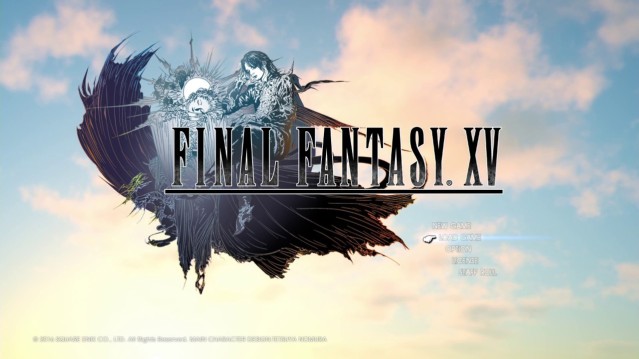As I was mindlessly cutting tiles for my kitchen backsplash a few months ago and humming Stand By Me, I got to thinking about something very iconic to the Final Fantasy series…not the Chocobos, or the Moogles, or the Cids, but the logos.
The Final Fantasy logo by itself is very recognizable, but I didn’t really give the logo much thought beyond it being a marketing device until finishing Final Fantasy XIII. The moment you finally realize what the logo for that game is referencing…yikes! It gave me chills.
So I thought it would be fun to welcome mid-week (I can’t believe tomorrow is only Thursday…OMG) with a countdown of the mainline Final Fantasy game logos and what they mean. I know there are quite a lot of other games that I’m not covering here, but I’ll revisit them another time – and yes, I do want to pretend some of the spin-off games don’t exist…Spoilers below, some of them relating to game endings.

Although this logo didn’t technically exist until one of the game’s many re-releases, there’s nothing too crazy here: The Warrior of Light, with his trademark horns and sword, looks as if he is facing someone in battle. There are some variations of the logo where he is facing forward. A vanilla logo for a vanilla game (yes, I hated it).

Same as Final Fantasy, FFII didn’t get their own fancy logo that followed the game’s trademark style until after a slew of re-releases. In this logo, you have the delightful lover of skull codpieces, Emperor Palamecia, cutting a fierce side-eye. This is the “first” (if we are counting the game order retroactively) logo in the game series to feature a villain. I would argue it’s technically the first logo (again, counting in game order) to be a specific person in the game, as The Warrior of Light is technically four individuals in Final Fantasy, and Square Enix just heavily commercialized a specific design for the Knight class for Dissidia Final Fantasy. There are alternate versions of the logo with the emperor looking even fiercer, if you can believe it.
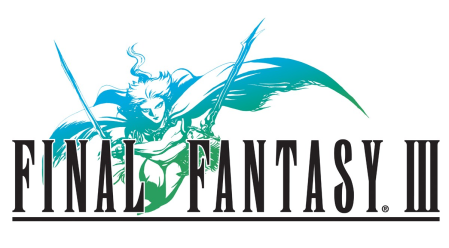
Final Fantasy III got a series logo of its own when the game was re-released for the Nintendo DS. You could probably argue that the character depicted is supposed to be Luneth, one of the generic onion knights who was given a personality in the DS remake, because of the ponytail. However, any character in the game can dual-wield and technically their hair could change depending on the job they were holding. In this color scheme, wouldn’t have Cloud of Darkness been a better, albeit less-PG choice?
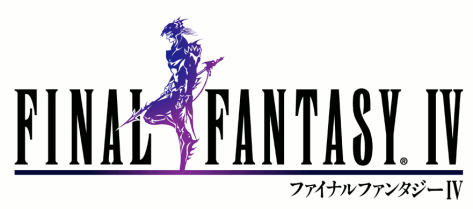
Final Fantasy IV’s logo features Kain, the dragoon hailing from Baron. Although not the main character or villain, he is Cecil’s best friend and the cause of 90% of the drama in the game, which is a pretty good qualifier for making the logo. On a more serious note, the theme of Final Fantasy IV is redemption, and Kain pledges to redeem himself on the cliffs of Mt. Ordeals at the end of the game before showing his face to his best friends again. A redo of the logo celebrating the DS release of the game features Golbez, the man who tempts Kain over to the dark side a couple times.
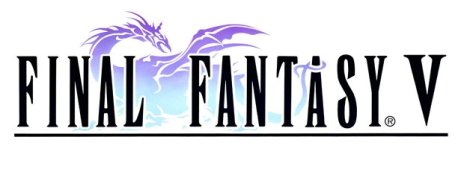
The dragon features in the Final Fantasy V logo is most likely either Lenna or Krile’s wind drake. Wind drakes are a recurring savior in Final Fantasy V, and Lenna’s wind drake in particular kills itself to become the Phoenix Summon usable by the party. Wind drakes are associated with the royal families of Final Fantasy V, and Lenna’s father, King Tycoon, favors wind drakes and raises them. Lenna is saved several times by her wind drake, and in the ending credits, you can see Krile riding hers.

The Final Fantasy VI logo features main character Terra, riding Magitek Armor. Terra was a Magitek Knight when she worked for the empire, and is mind-controlled and riding Magitek Armor in the opening of the game. Of course, eventually, Terra is struck with amnesia, rescued by rebel Locke, and comes to terms with her brainwashing by the evil empire in order to save the world that she once threatened. Although the logo is simple enough, it is kind of creepy that Terra is riding around in a machine that is powered by the souls of her dead Esper ancestors…right?
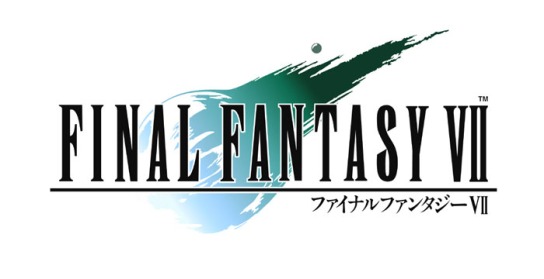
One of the most famous Final Fantasy logos, and the first logo in the series to not be obvious as to what it is depicting until near the end of the game. This would become a trend that has resurfaced as recently as with Final Fantasy XV. The meteor depicted in Final Fantasy VII’s logo is of course Meteor, the spell Sephiroth summons using the Black Materia in order to take the planet back for his ancient parasite of a mother, Jenova. Unfortunately, that’s just code for “destroy the world”. He nearly succeeds, but as the meteor is about to strike the planet, green wisps of Holy magic begin to weave their way across the planet’s surface, destroying the meteor as it makes contact. Holy is of course the spell Aerith summoned with her “useless” White Materia seconds before Sephiroth murdered her, and the reason why she was praying up until her death is finally revealed to her friends when the planet is saved.
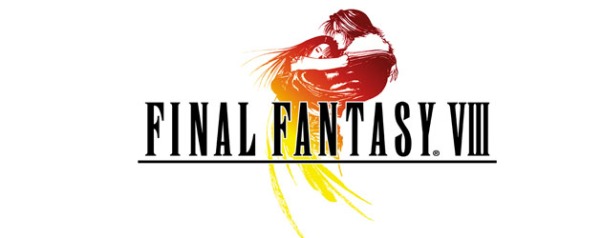
Although not directly correlated with a specific scene, Squall and Rinoa’s relationship in Final Fantasy VIII is a source of conflict and salvation, and the the game was always touted as a love story from the beginning of its development. Within rebel-turned-sorceress Rinoa, military student Squall finds something worth fighting for, and at the end of the game, it’s Rinoa’s love (and magic) that saves Squall from being lost in a bizarre time-compressed hell forever.
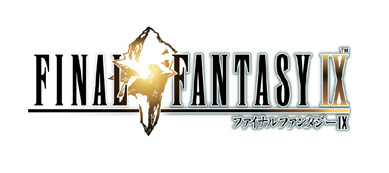
In Final Fantasy IX, crystals house the souls of those yet to be born in worlds, and is where souls return when they die. You can think of it as a giant, planetary HEPA filter. Although kind of thrown in at the last minute, once the good guys learn about the crystal, they also, unfortunately, learn that Kuja is out to destroy it. The crystal of Gaia is rigged into holding the souls of the planet Terra, whose crystal is dying. The result means that the souls of Gaia have no where to go, and are being turned into monsters by the man who hijacked Gaia’s crystal, Garland. Kuja, on the other hand, just wants to eff things up for Garland since he was deemed a failed genome experiment in Garland’s eyes. The crystal is the center of existence, and when it is destroyed, the god of the void (nothingness), Necron, appears, and becomes your final battle.
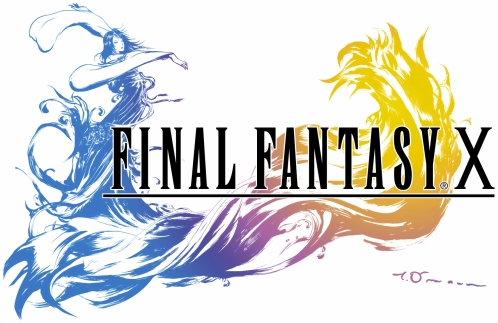
In a simple, but sad scene, Final Fantasy X’s logo features a representation of Yuna doing the religious ceremony/dance that escorts the souls of the dead to heaven. However, she is also facing what turns out to be her greatest enemy in the game – the monstrous leader of the religion she was raised to believe would save the world: Yu Yevon. In this particular form, Yu Yevon is Sin, the “armor” he wears to destroy worlds.
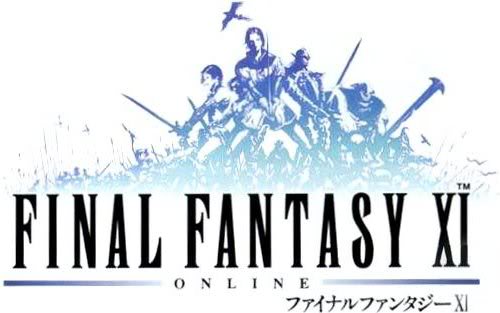
Since Final Fantasy XI was the series’ first online RPG, it makes sense that the logo would feature large groups of warriors, which represented players all over the world. In particular, the warriors in the front represent that different class types you could choose from when you started the game.
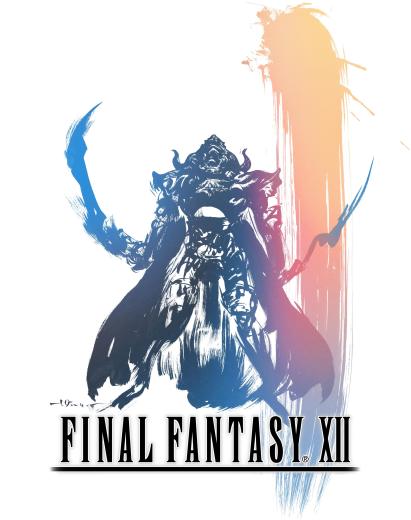
In the series’ first vertical logo (which makes the print coordinator in me cringe), you get a heap of Judge Gabranth, who was admittedly as overwhelming and larger than life in the game as he is in this logo, so mission accomplished. Gabranth represented raw power and fear in Final Fantasy XII, and played a crucial role opposite of his twin brother, Basch.
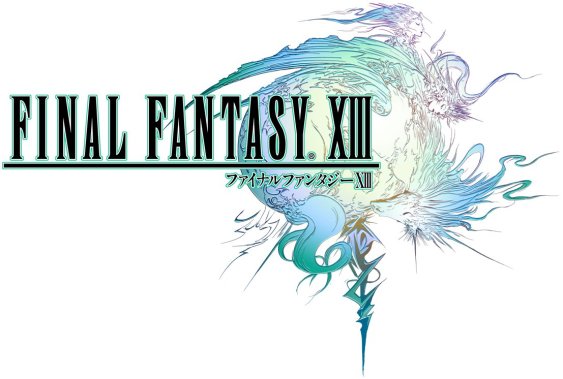
Final Fantasy XIII got a bad rap, but the ending more than made up for it (before Final Fantasy XIII-2 undoes that ending…ugh). Throughout the game, the main characters are tasked with fulfilling a mission (a Focus), and the clock is ticking – if they don’t fulfill it in time, they get turned into monsters. If they succeed, they turn into…crystals. Their mission? Destroying their home planet.
Vanille and Fang, two members of your party that gained their mission long before Lightning, never reveal their focus until the very end. As their home world is collapsing thanks to Lightning killing the god that was sustaining it (oops), Vanille and Fang transform into Ragnarok, a dragon god that is supposed to bring the world’s end. Instead of destroying the world, however, Fang and Vanille embrace the falling planet, and crystalize – providing a pillar that cradles the world and saves everyone while sacrificing their own lives. The logo is the last scene of the game.

Similar to Final Fantasy XI, Final Fantasy XIV’s logo is a gathering of warriors intending to represent players around the world.
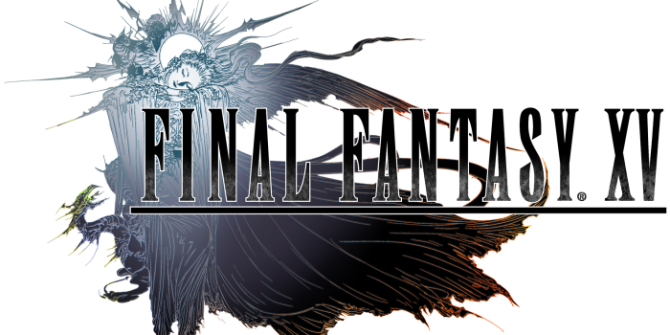
And last, but not least, the logo for Final Fantasy XV – With the noticeable lack of women in the game, it’s not hard to figure out that the person in the logo is one of a few people – Luna, or maybe a goddess (Shiva?). But what was she doing, exactly? Many people know that when Final Fantasy XV was known as Final Fantasy Versus XIII, the logo (which was very similar) represented a sleeping goddess who had effectively abandoned the planet.
Luna, who was Noctis’ betrothed, but more importantly, an oracle, was killed while helping Noctis obtain the powers of the gods so he could save the world. At the end of the game, Noctis, as the King of Kings, sacrifices himself to complete the spell that will drive the darkness from the planet. In a dream sequence at the end of the game, you see Luna and Noctis on what would have been their throne in Insomnia, looking at a photo from Noctis’ adventure while in the wedding attire they never got to wear while they were alive. This scene is described by the lead developer as Noctis’ “Final Fantasy”. Luna leans her head on the throne and falls asleep, and Noctis leans against her, revealing the game’s true logo and the end credits:
